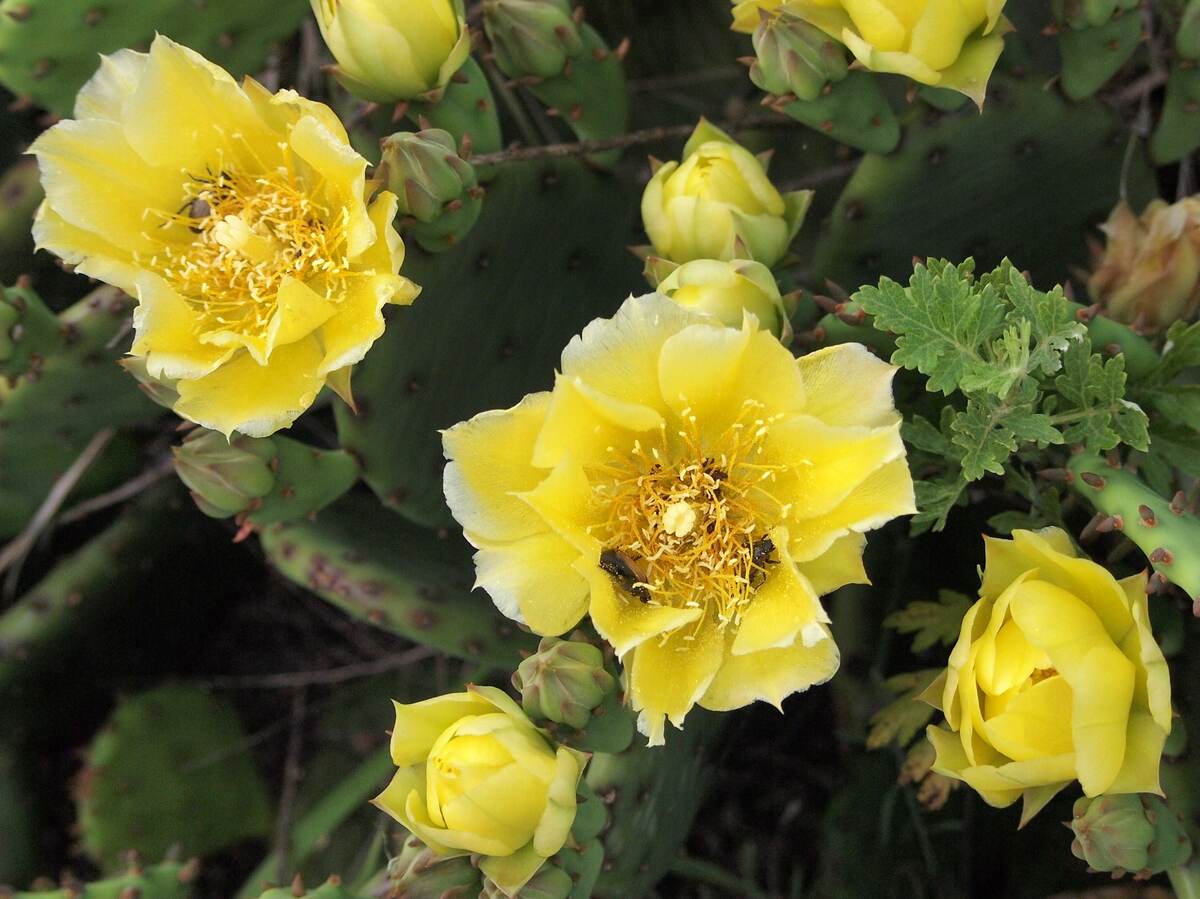
Colorado Springs can be a difficult place in which to grow plants. The weather is cold. The soil is loamy, with some finding a lot of the clay that is common in the rest of the state. The solution? These five native plants that thrive in Colorado Springs.
Native plants have existed in the area for as long as anyone can remember. Certainly, they can be traced back to before the arrival of the first European settlement in 1851. Therefore, they are good choices to grow in your yard.
These plants connect with our heritage. They provide food for birds, animals, and insects and need less water and fertilizer, a result of centuries of growing year-round on their own.
Here are five native plants that will thrive in Colorado Springs.
5 Native Plants That Thrive in Colorado Springs
1. Red Twig Dogwood (Cornus sericea)
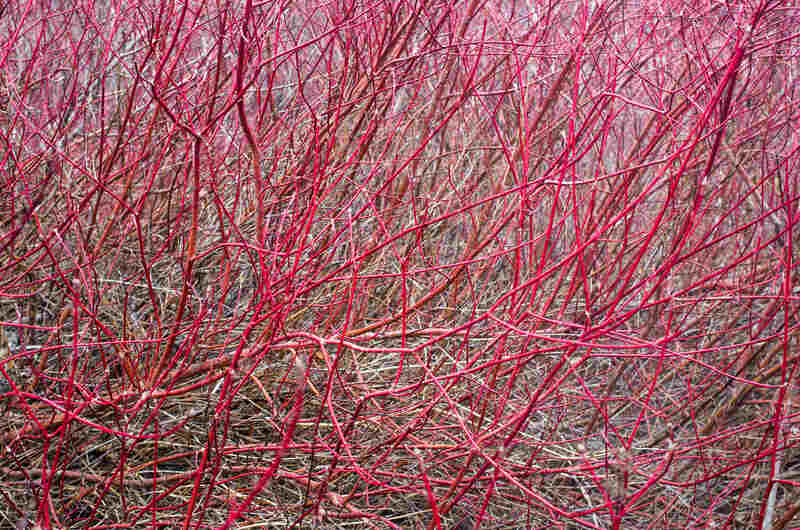
The red branches against the pure white snow is a stunning sight for sure, but the red twig dogwood brings a new look to your landscape during every season.
- In spring, white flowers blossom in clusters amid lush, oval leaves.
- In summer, birds feed on the plentiful white berries.
- In fall, the leaves turn a vibrant red.
- In winter, the red branches add drama to what was previously a drab landscape.
The red twig dogwoods planted in a row will act as a privacy screen. When older branches begin to fade, prune them to encourage new growth and maintain the brilliant red of the bark.
- Plant type: Deciduous shrub
- Hardiness zones: 3 to 7
- Sun: Full sun to part shade
- Water: Medium to wet
- Soil: Rich, fertile, consistently moist
- Duration: Perennial
- Mature height: 6-9 feet
- Mature spread: 7-10 feet
- Maintenance: Medium
- Flower/foliage: White flowers set off against red stems known for their beauty
2. Rabbitbrush (Chrysothamnus nauseosus)
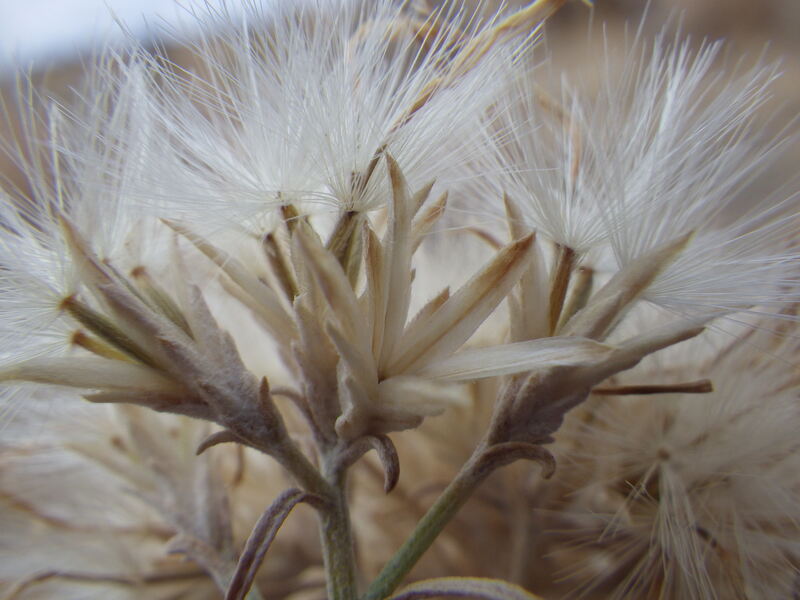
Rabbitbrush is one of the most ornamental and stylish Colorado native plants. Used by many as a ground cover, the plant has narrow stems and bluish-green to silvery-green leaves that grow in clusters. As an extra-added attraction, the rabbitbrush has a lovely fragrance, particularly after a storm.
In late summer and autumn, glorious yellow flowers blossom and attract beautifully colored butterflies. In the winter, the fluffy seed heads draw in the birds and create a soft, textured element to the landscape as they bask in the subdued winter light.
- Plant type: Deciduous shrub
- Hardiness zones: 4 to 9
- Water: Dry, a drought-tolerant plant
- Sun: Full sun or partial sun
- Soil: Clay, loam, and sand
- Duration: Perennial
- Mature height: 4-7 feet
- Mature spread: 4-7 feet
- Maintenance: Medium
- Flower/foliage: Yellow flowers that attract a kaleidoscope of butterflies
3. Creeping Mahonia (Mahonia repens)
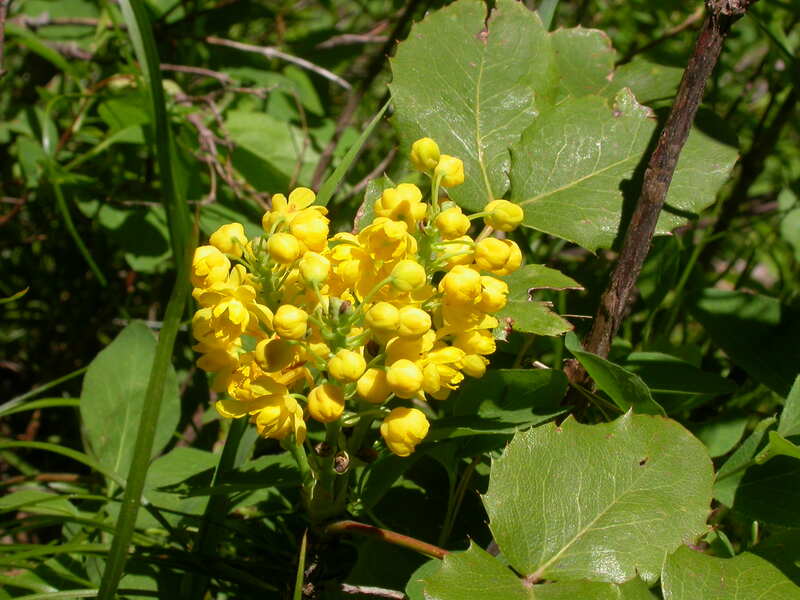
Also known as Colorado grape holly, creeping mahonia makes an eye-catching ground cover for Colorado Springs landscapes. With stems that spread underground, it grows in the sun or shade and produces colorful, yellow flowers in the spring and berries in late summer. It is found throughout the Rocky Mountains growing among boulders.
The spiny-toothed, blue-green leaves turn a glowing burnished red in the winter, making them great holiday decorations. This evergreen, a Colorado native, is considered a good plant to place in a nook found in a rock garden.
- Plant type: Evergreen ground cover/shrublet
- Hardiness zones: 5 to 8
- Sun: Partial sun to shade
- Water: Medium, tolerates episodic drought once established
- Soil: Best in moist, humus-rich soil
- Duration: Perennial
- Mature height: 0.75-1 foot
- Mature spread: 0.75-1.5 feet
- Maintenance: Medium
- Flower/foliage: Holly-like, evergreen leaves with bluish-green leaf-like growths. Purple-ish leaves in winter. The flowers are bright yellow in spring. Produces small clusters of grape-like, dark purple berries in late summer that are bitter to eat but can be turned into a jelly. However, birds love the berries and will flock to your yard to get a taste.
4. Prickly Pear Cactus (Opuntia compressa)
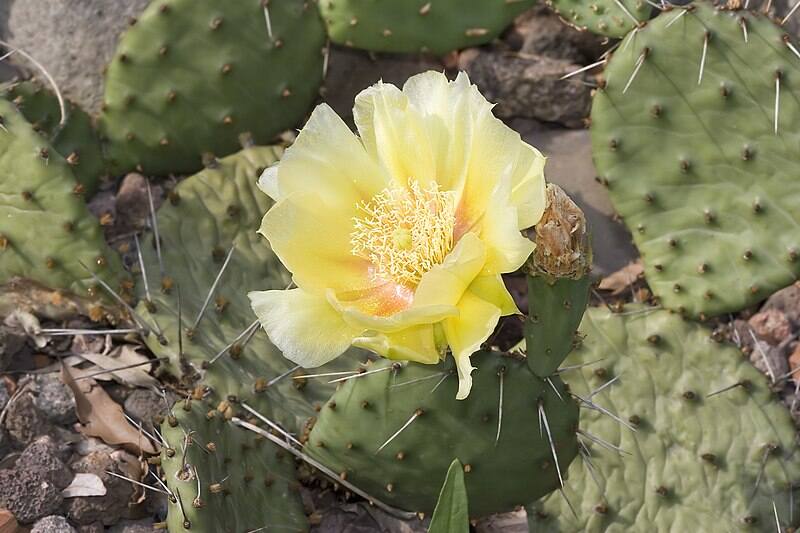
The prickly pear cactus makes up for its off-putting paddles, threatening spines, and hairlike prickles with a magnificent display of yellow, orange or magenta flowers in the spring-summer and sweet, succulent purple-red fruits in late summer. The fruit is heavenly, just be careful that you don’t get the prickles stuck in your skin or tongue.
The cactus is cold hardy, and remains gray-green all year, even when, in the winter, it lies down on the ground. If these native Colorado plants look like they’re dead, be aware that they’re not. It’s fascinating to see it rise again in the spring.
Beware: The large spines can pierce through the soles of running shoes.
- Plant type: Cactus
- Hardiness zones: 4 to 9
- Sun: Full sun
- Water: Dry, extremely drought tolerant
- Soil: Sand, clay, or gravelly soil, as long as it’s well-drained. If you’re worried about selenium in your soil, plant an opuntia. The U.S. Department of Agriculture believes the plant is a natural answer to reducing selenium in the soil. Prickly pear cacti absorb selenium and lessen the amounts that end up in irrigation runoff, which is toxic to wildlife.
- Duration: Perennial
- Mature height: 0.5 to 1 foot
- Mature spread: 1 to 1.5 feet
- Maintenance: Low-maintenance overall and more tolerant of the cold than other cacti
- Flower/foliage: Flower colors are yellow, orange, or magenta; purple-red fruit
5. Smooth Sumac (Rhus glabra)
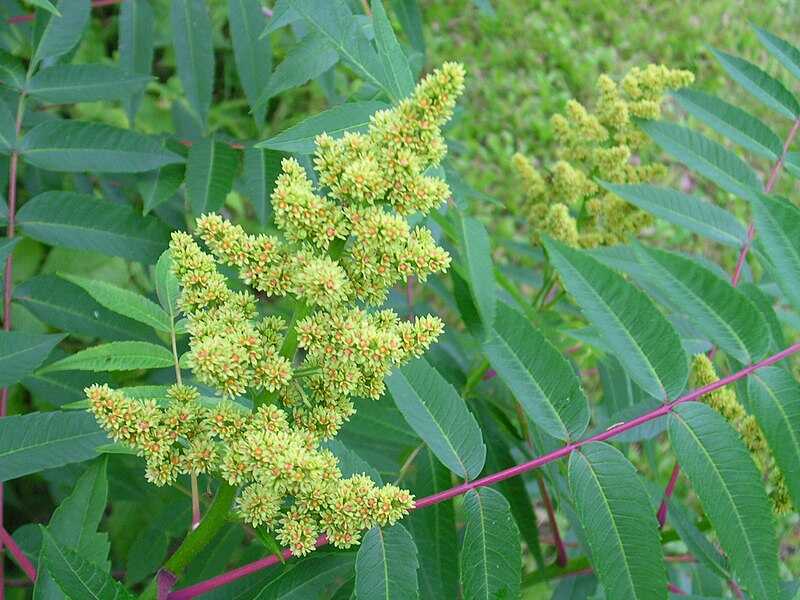
Smooth sumac is a colorful shrub that is found throughout the Rocky Mountains, is low maintenance, and attracts wildlife.
- Birds and small mammals consume its red-purple berries in winter.
- Deer nibble its twigs and fruit all the year.
- Hairstreak butterfly caterpillars use it as a larval host.
- Butterflies flock to its fragrant yellow flowers in the spring.
It is the only shrub or tree species native to all 48 contiguous states. Its resistance to pollution makes it a great addition to an urban landscape.
- Plant type: Deciduous shrub
- Hardiness zones: 3 to 9
- Sun: Full sun to part shade
- Water: Dry to medium, drought tolerant
- Soil: Well-drained soil of any type
- Duration: Perennial
- Mature height: 9-15 feet
- Mature spread: 9-15 feet
- Maintenance: Medium
- Flower/foliage: The stout stems, exotic plumes of tropical-looking leaves, and abundant spikes of red-purple fruit provide drama from fall through late winter. Spikes of green-yellow flowers adorn the tree in the summer but go mostly unnoticed. In the fall, the large pinnate leaves, a vibrant green, turn into a royal scarlet.
These are just five native plants that will withstand the cold in Colorado Springs. They’ll also hold up in the Front Range’s dry summers.
Estimating the Cost of Installing Native Plants
To have a pro landscaper work on your project, LawnStarter research finds that you can expect to spend:
- $5 per square foot for a softscaping (putting in grasses and plants)
- $24 per square foot for hardscaping (making it a landscaping project by adding such things as pavers and ponds)
Most homeowners’ needs will fall somewhere in the middle, LawnStarter finds, so you might be best off using the average cost of $15 per square foot in estimating the cost of a project.
- For a large area, expect to pay $2,000 to $4,000 to have a professional install an acre of native plants.
Installing Native Plants as a DIY Project
If you want to install even one or two native plants as a DIY project, you should:
- Determine what kind of soil you have and what growing zone you are in, to be sure you bring in the right plants.
- Decide if you want to attract wildlife, then what kinds of wildlife (such as pollinators, including hummingbirds), then plan to add the right native plants to meet those goals.
- Prepare the ground: Remove existing vegetation (perhaps with a rototiller or sod cutter).
- Spruce the soil: Add compost or peat moss; it helps young plants grow. Don’t fertilize; it also helps the weeds. Do mulch.
- Seeds or plants: Decide which is best for you. Plants cost more but establish sooner. Seeds can need a year or two to poke through.
- Plan to weed for at least the first few seasons. After that, you will be able to let them be.
Source: Wisconsin Department of Natural Resources
Preparing the Soil
Colorado soils are low in the organic matter that creates the rich, fertile ground you will want for your plants. You should take steps to ensure that your soil is good to go:
- Mix a soil amendment into the soil, especially in areas, such as new housing, that are being planted for the first time.
- A soil test is the best way to determine if you need compost or fertilizer.
- Select a soil amendment: Colorado Springs Utilities has a list of approved soil amendments that includes EKO compost, available at Lowe’s and Home Depot, and Nature’s Yield Compost, which should be available at nurseries and garden centers.
- Acquire four cubic yards of the soil amendment for every 1,000 feet of ground.
- Rototill or shovel up the soil.
- Work the soil amendment into the top six inches of the soil.
- Within a few days, mulch the surface. The mulch prevents weeds and the erosion of soil.
- Avoid fresh manure, sand, wood ashes, or mountain peat.
- Avoid leaves, wood chips, and bark that have not yet decomposed.
One benefit: Doing this should save as much as 25 percent of the water your new plants will need, an important consideration in the Rocky Mountain region.
When to Call a Professional
Adding native plants to your yard or a landscaping project can be a fun DIY endeavor. However, if you are going to add other elements (pavers, other plants, a pond), you should consider bringing in a local landscaping professional.
They will know:
- Where to properly acquire native plants. You don’t want to simply go into the Rocky Mountains or other wild areas and dig them up, nor do you want to acquire them from those who do. The National Wildlife Federation calls this “crimes against nature,” and has called for it to stop.
- Which invasive species to avoid. There are invasive native plants, with the U.S. Geological Survey leading an effort to combat them.
- How best to place the native plants. Trial and error can be fun, but for a large enough project, you might want to get it right the first time. You want to be sure to grow an exciting mix of flower colors. You might want to attract pollinators and hummingbirds.
- How to mix them with wildflowers. Some native grasses will crowd out wildflowers and other native plants. You want the right Colorado Springs native plants for landscaping.
- They have specialized equipment, and know how to operate it. As always.
FAQs
Colorado Springs is rated by the U.S. Department of Agriculture as being in the 5a, 5b, or 6a Plant Hardiness Zone.
The elevation of Colorado Springs is 6,090 feet. In contrast, Denver, the Mile High City, is exactly a mile high at 5,280 feet. The average elevation in Colorado is 6,800 feet.
There are an average of 152 days that are frost-free.
Though Colorado is known for having a great deal of clay in its soil, Colorado Springs has sandy soil that is nearly level and gently sloping. It is classified as “loamy,” meaning it combines in equal measures the three elements of sand, silt, and clay.
The most common of the native plants in Colorado is the lodgepole pine (pinus contorta var. latifolia), according to Colorado Parks and Wildlife. An evergreen, it grows year-round and covers about 60 percent of the forested area of the state.
A Call to Action
There are a lot of good reasons for adding native plants to your yard in Colorado Springs. They are certainly suited for the difficult growing conditions. They can also help you connect with the heritage of the land.
But don’t try to add native plants on a casual basis. Take the time to decide on the right Colorado Springs native plants for your landscaping and do the work, or hire a professional Colorado Springs landscaping service to do it, so that the plants thrive.
Main Image Credit: Elena Gaillard / Wikimedia Commons / CC BY 2.0